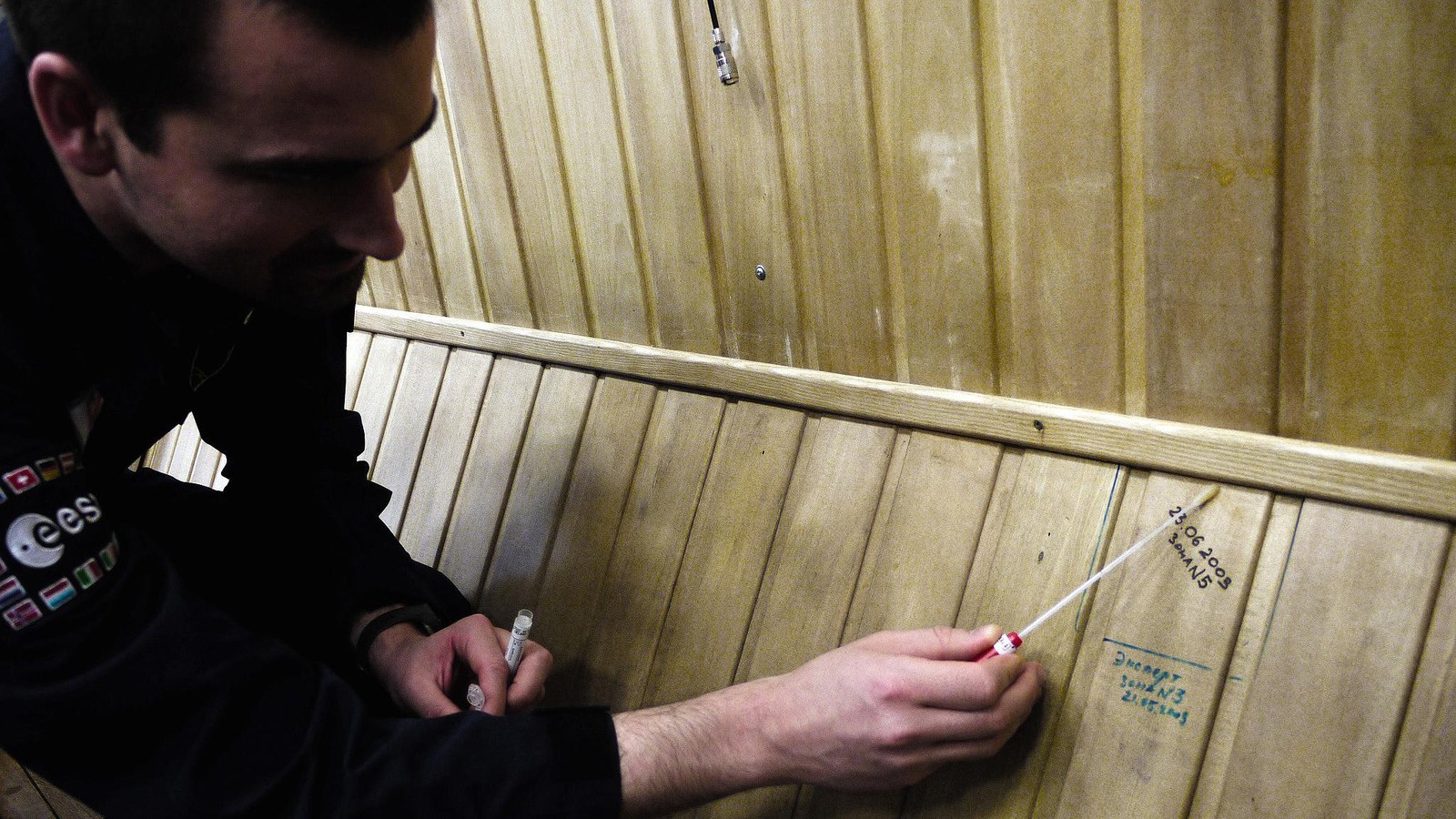Fit and well, en route to the Red Planet

The voyage to Mars, our red planetary neighbour, is more than just a dream – it is a definite goal for human spaceflight. But a whole series of scientific questions need to be answered before this kind of journey can be undertaken. This prompted the Russian space agency Roscosmos and the European Space Agency to conduct the Mars500 study from June 2010 to November 2011, simulating a 520-day journey to the Red Planet. During the study, a team of scientists from Germany, Austria and Great Britain led by the German Aerospace Center (Deutsches Zentrum für Luft- und Raumfahrt; DLR) examined the development of microorganisms in the 'space station', and how they impact the health of the astronauts. The findings of the study have now been published for the first time.
Mars500
The isolation study Mars500 simulated the return journey of a six-strong team to Mars. The six participants in the study lived isolated from the outside world during their 520-day mission, inhabiting a purpose-built 'space station' at the Institute of Biomedical Problems IBMP near Moscow.
In addition to technical and social aspects, microorganisms were also analysed in the hermetically sealed habitat in which the participants lived. The astrobiologists were particularly interested in the microbium – the totality of all microorganisms that populate humans, other living beings or surfaces and that are spread through the air or by these agents. The study also explored the effects of isolation on the totality of organisms existing on board.
"Until now, we did not know much about the effects of isolation on the number and composition of microorganisms inhabiting a spacecraft. The dynamics behind microbium distribution were also unclear. This study is the first investigation of the microbial count, variety and dynamism in a hermetic system for the duration of a simulated Mars mission with a 30-day stay on the Red Planet," said Petra Schwendner. In the framework of the DLR SpaceLife PhD programme, Schwendner completed her doctoral degree at the University of Regensburg writing here thesis on 'Microbial Ecology of the Mars500 Habitat'. She is now continuing her studies at the University of Edinburgh.
The simulated spacecraft was divided into various autonomous modules: common rooms, sleeping facilities, toilets, a gym and a medical section. Nicknamed 'Marsonauts', the study participants cleaned these areas at regular intervals to be able to monitor the effects and effectiveness of detergents. The Marsonauts took microbial samples from the air and the surfaces in the various sections at 18 predefined times.
Not only did this provide a record of all microorganisms present in the system, it also enabled analysis of their dissemination and concentration in certain areas of the 'spacecraft'. Microbial diversity was highest in the common rooms and lowest in the medical wing. As expected, the spread of various bacterial strains was mostly done by the crew. Among others, a number of Staphylococcus strains were found that can cause skin infections if the immune system is compromised.
Variety and balance
It was also possible to analyse changes in microbial diversity over the course of the simulated Mars mission. The findings revealed that the diversity of microorganisms fell as the isolation progressed, which may be due to the detergents used and another number of factors. In general, ambient microbial diversity promotes a balance of microorganisms and therefore positively influences human health.
However, the microbial diversity at no point during the study period fell so dramatically that it could have caused health problems among the crew members. But it did reveal a trend that may lead to problems on even longer missions. Studies building on this insight will be designed to develop countermeasures in order to preserve the microbial diversity.
The unique test conditions during the Mars500 study yielded important insights for future long-term missions in space. This information will make an important contribution to preserving the health of astronauts and to deepening the understanding of biological processes unfolding on Earth as well.
In addition to the DLR researchers, the project team also included scientists from the Medical University of Graz, TU Graz and the University of Edinburgh.

